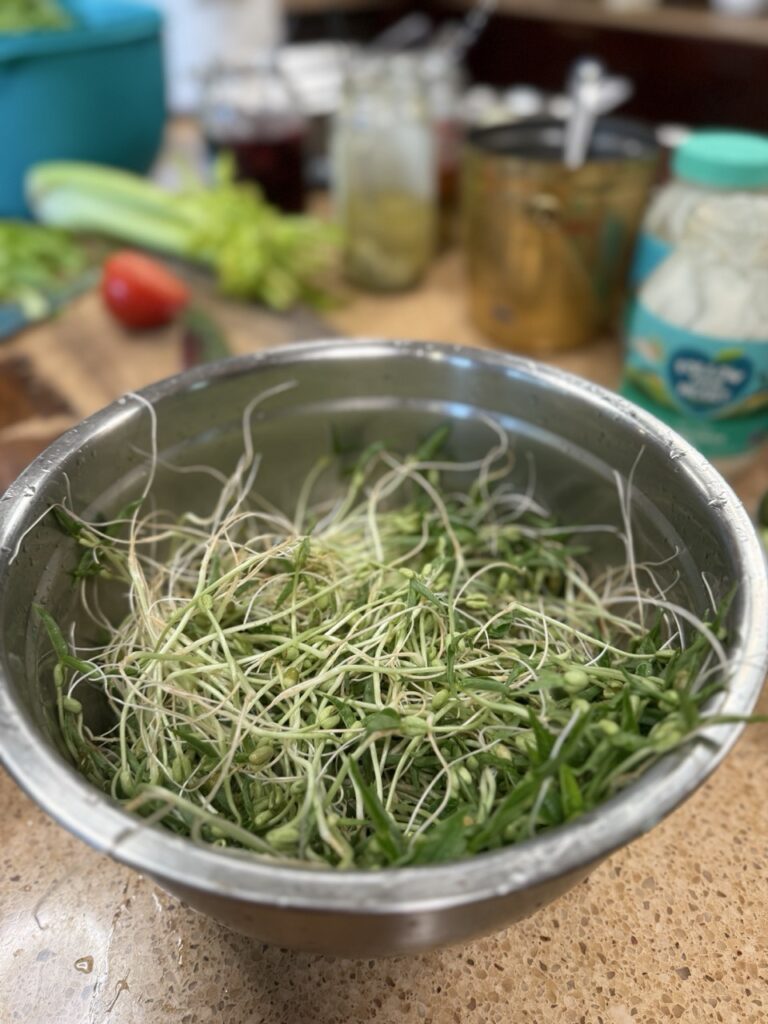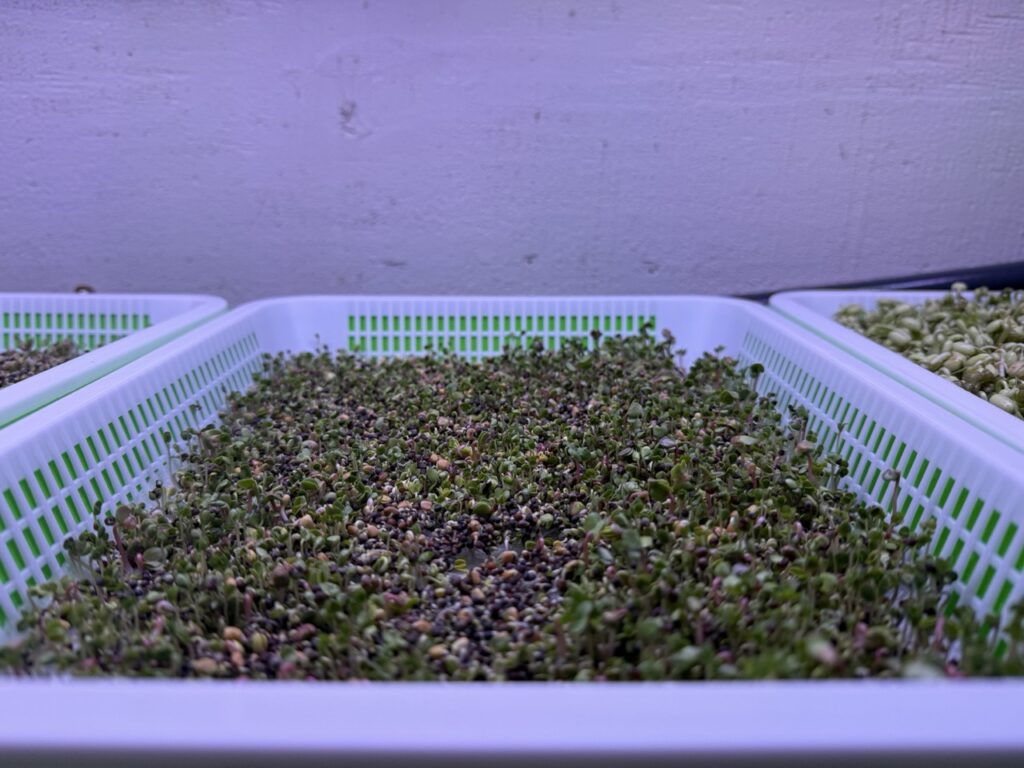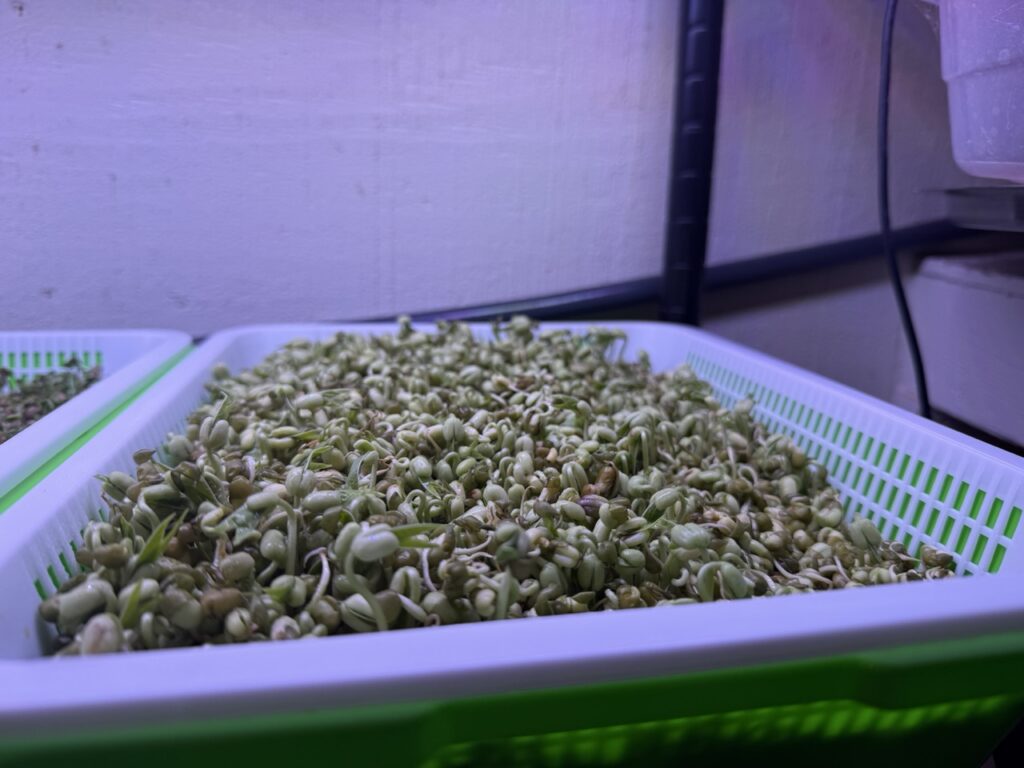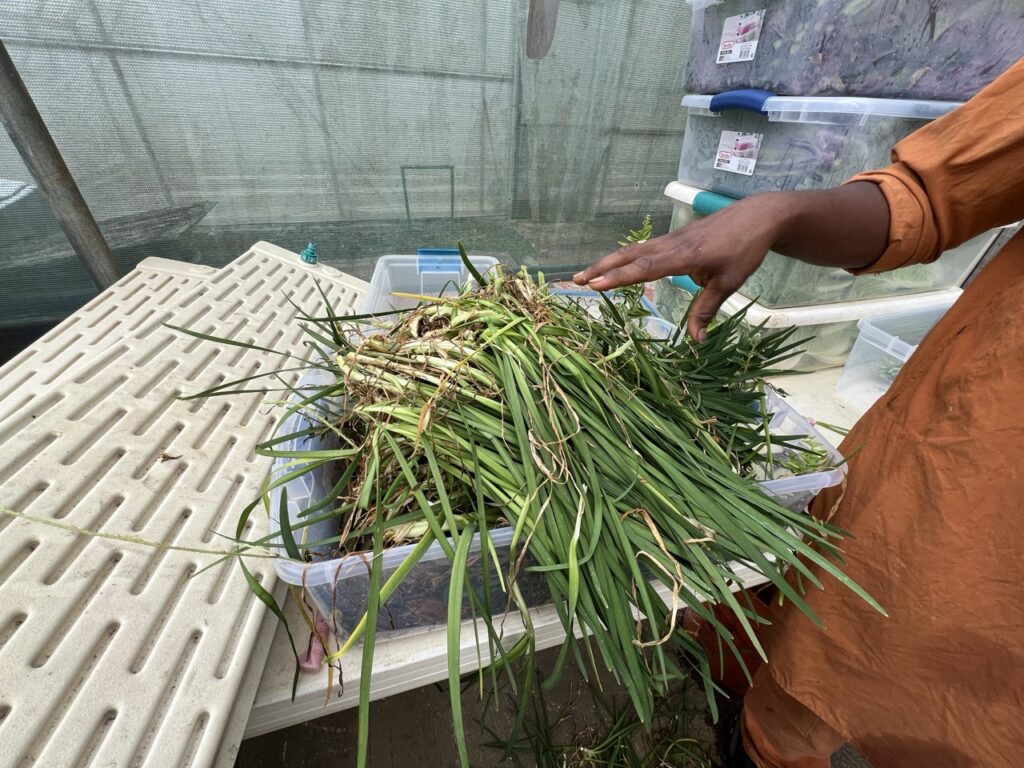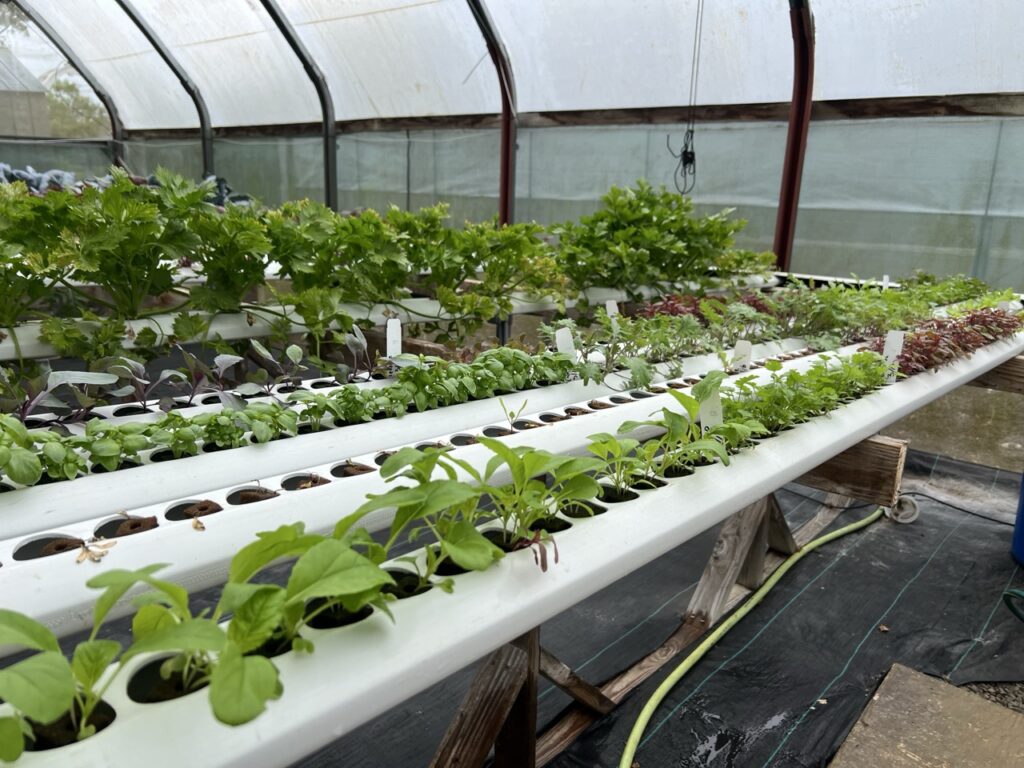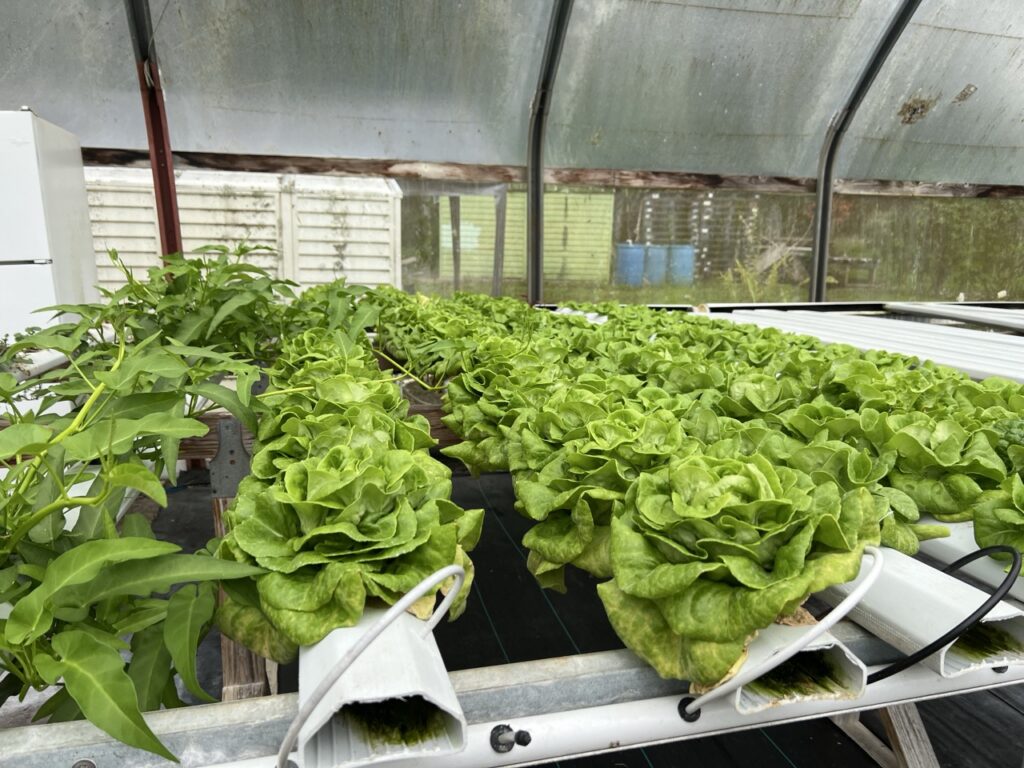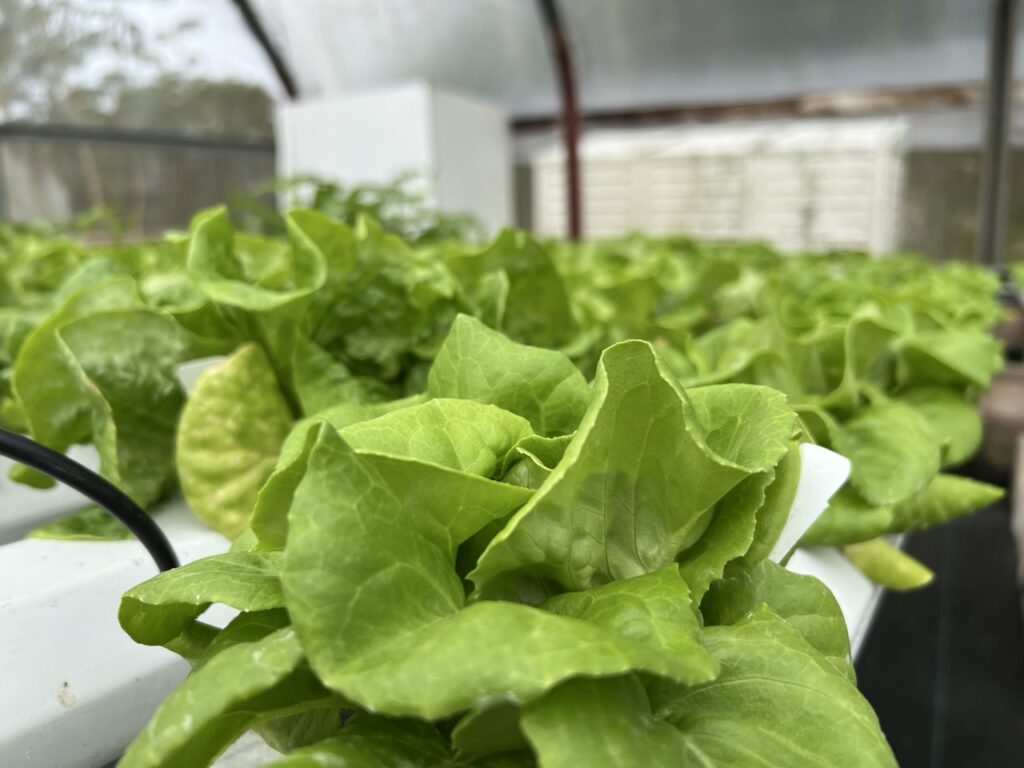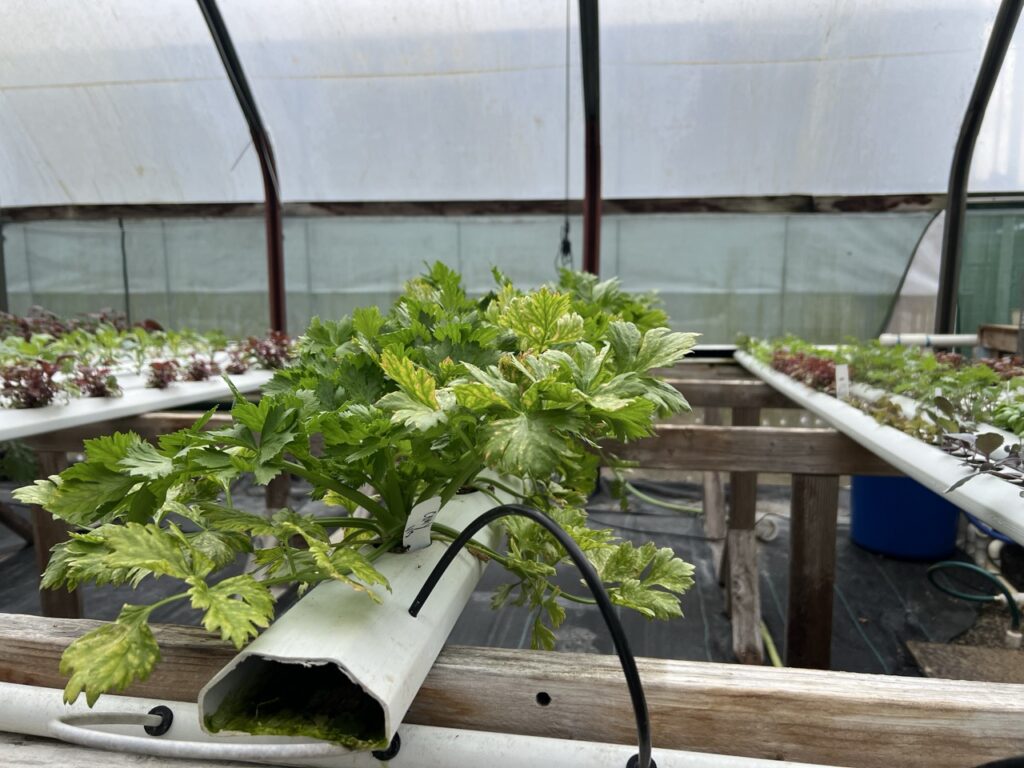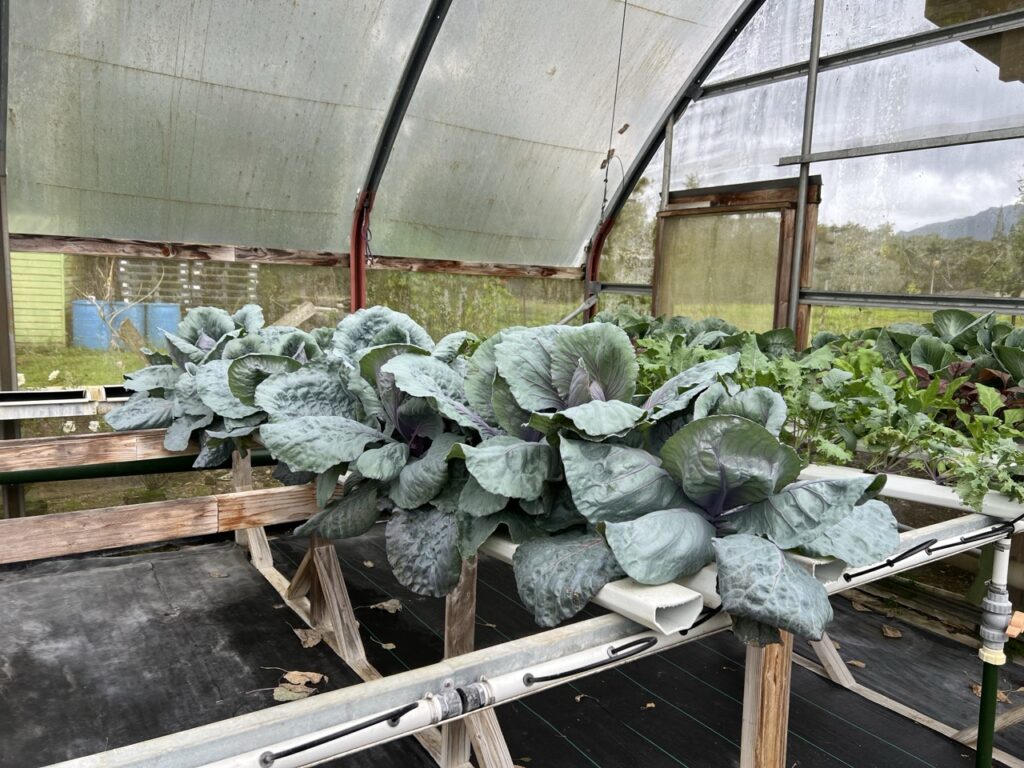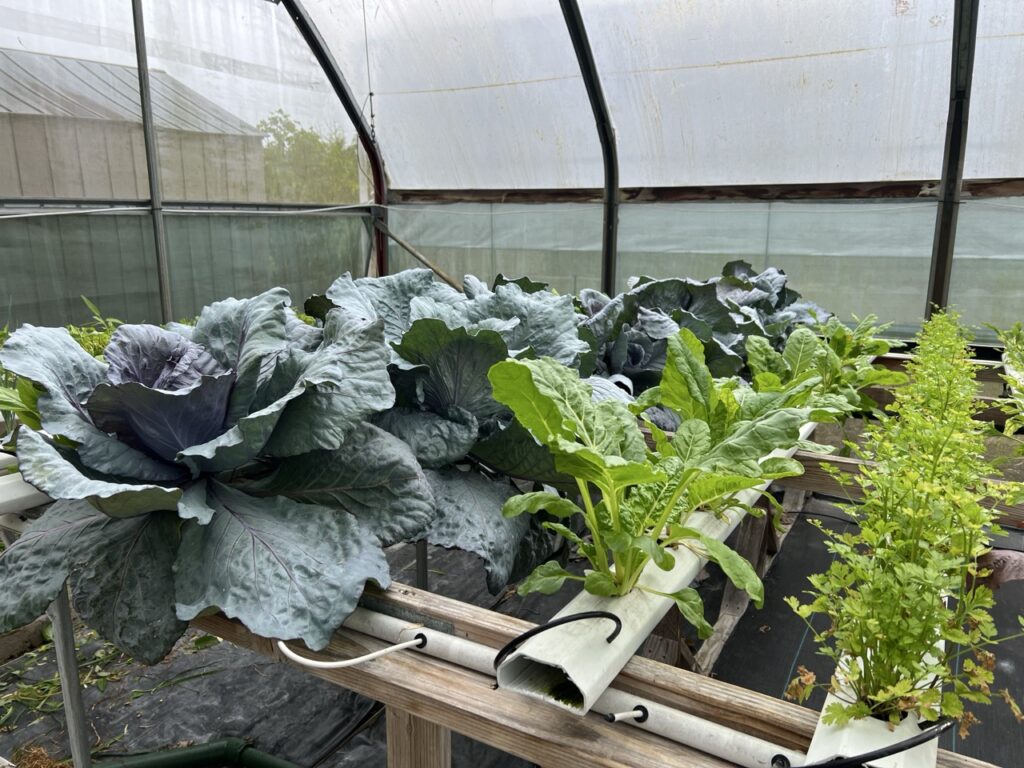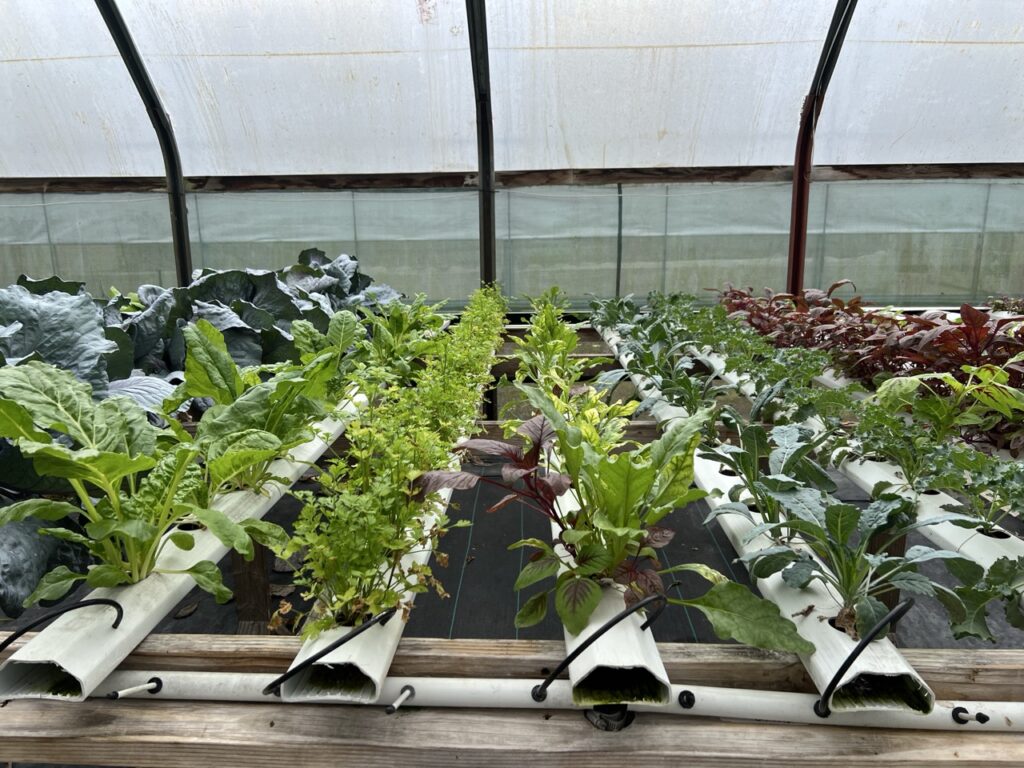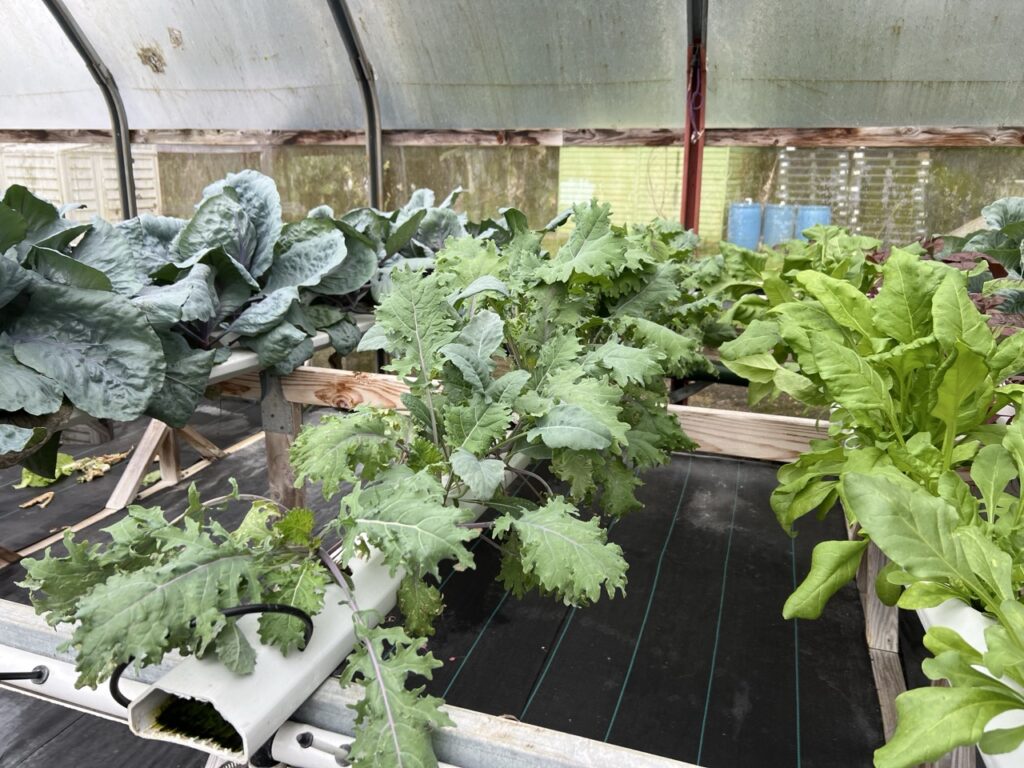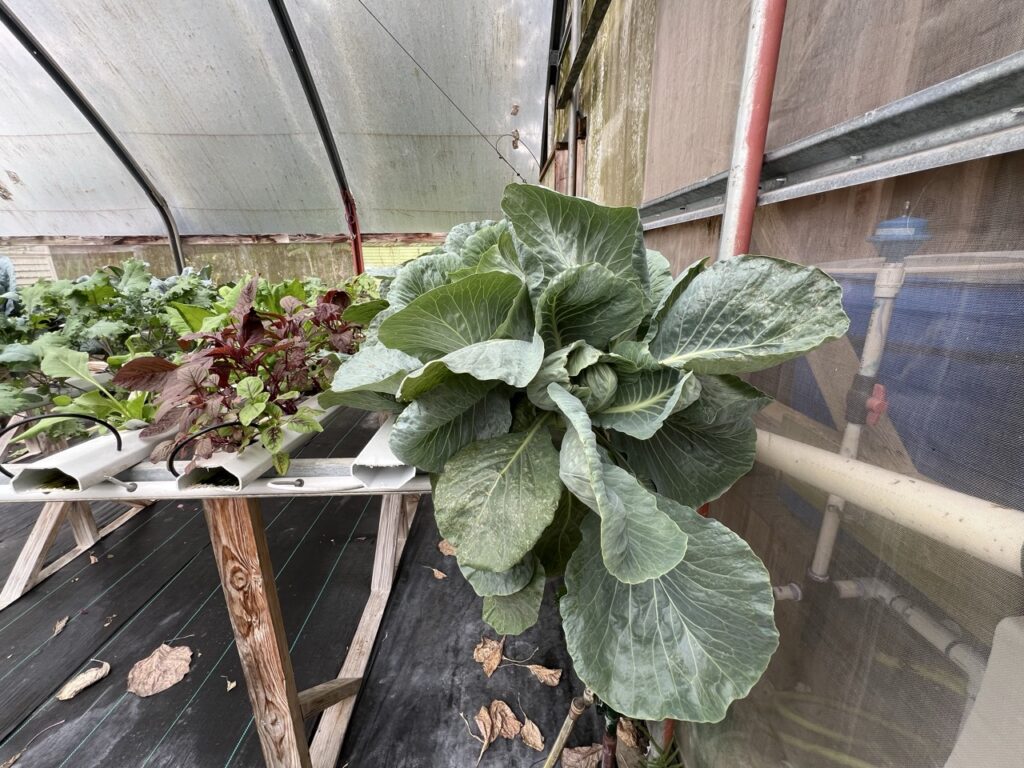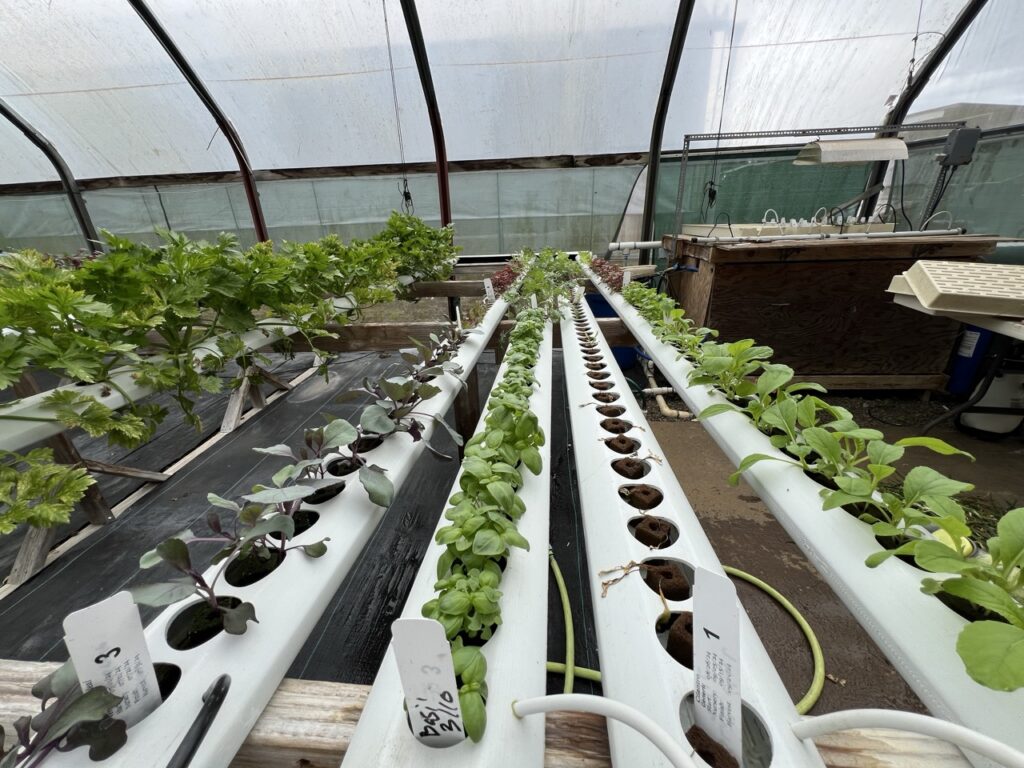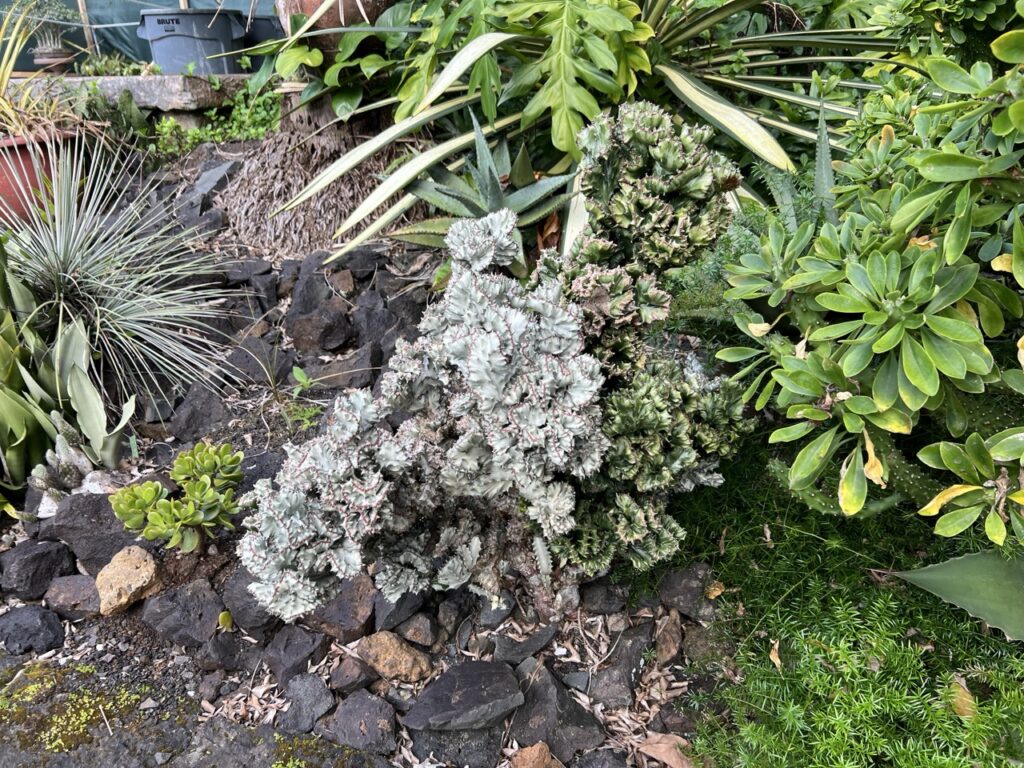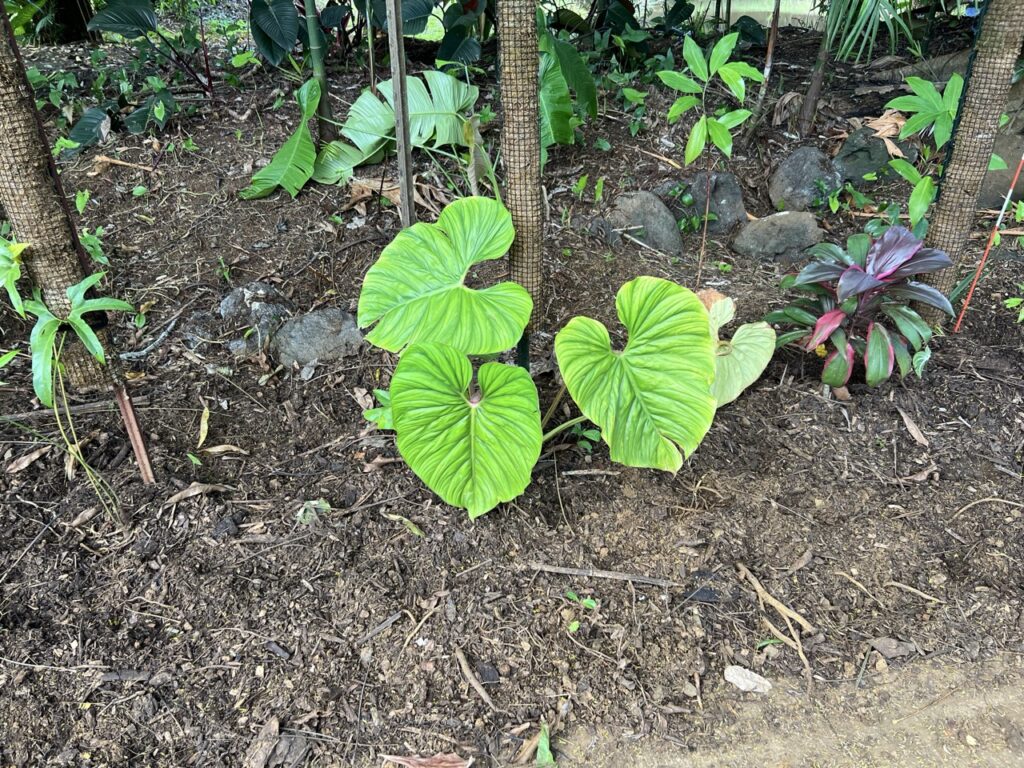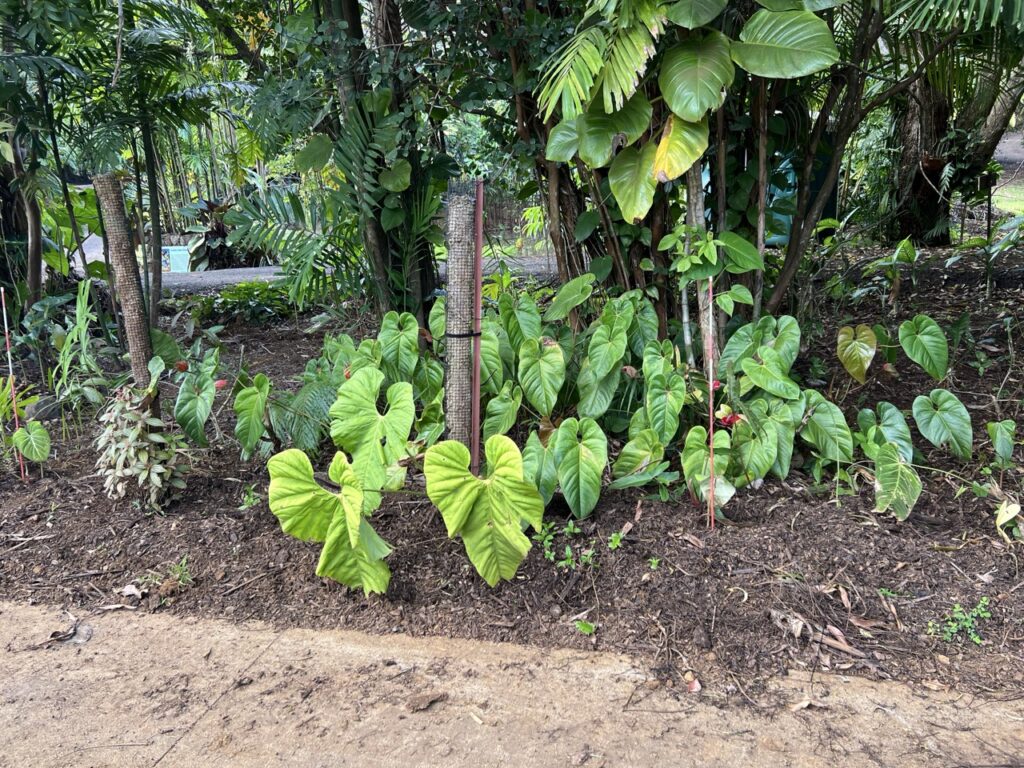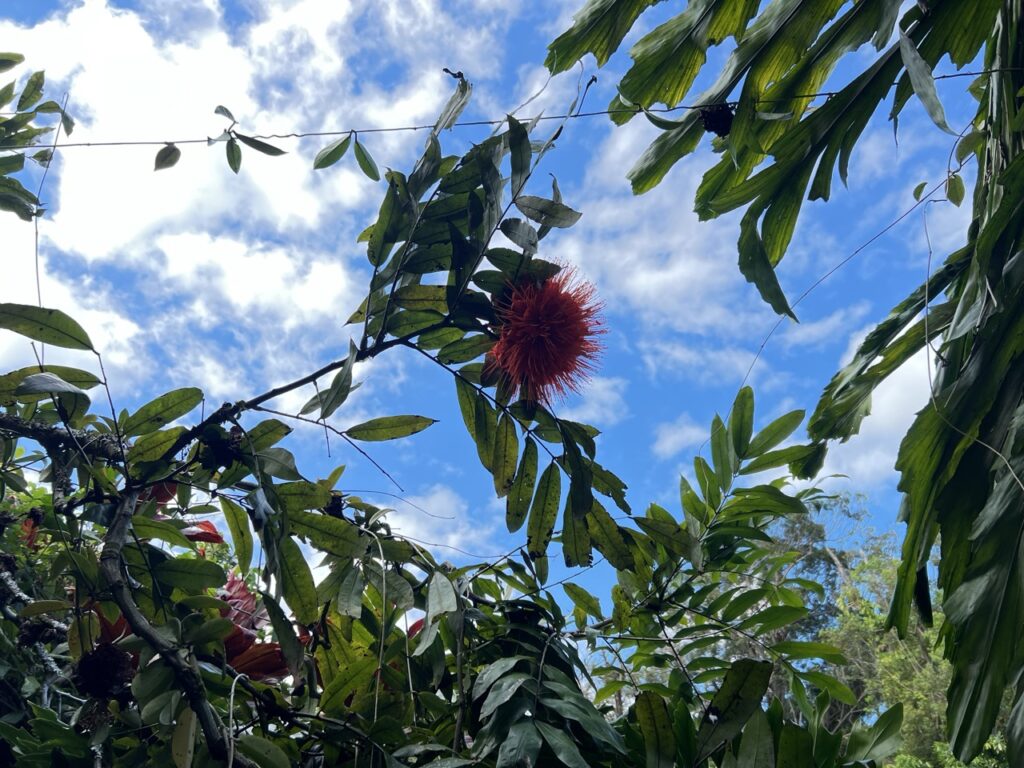Our Own Bean Sprouts
Jai Ganesha!
We’ve recently started growing some sprouts in our garden. Mostly we’ll be growing the gold standard of alfalfa and broccoli sprouts. But this first batch is mung micro greens. At this stage of growth, the harder-to-digest compounds are all gone. They get rinsed in a light vinegar solution before serving with food.
From ChatGPT about it:
Microgreens like mung, broccoli, and alfalfa are considered exceptionally good for you because they concentrate nutrients at a stage of growth when the plant is most metabolically active. Here’s why each is so beneficial:
1. High Nutrient Density:
Microgreens can contain 4 to 40 times more nutrients by weight than their mature counterparts. This includes vitamins (C, E, K), minerals (iron, potassium, zinc), and antioxidants. Because they’re harvested just after sprouting, they retain the compounds the plant generates to fuel its early growth.
2. Rich in Antioxidants and Enzymes:
Broccoli microgreens are especially high in sulforaphane, a compound known for its anti-cancer and anti-inflammatory properties. Alfalfa sprouts contain phytoestrogens, which may support hormonal balance and bone health. Mung sprouts provide digestive enzymes and bioavailable proteins, making them easier to digest than dried beans.
3. Easier Digestion and Better Absorption:
Sprouting breaks down complex compounds (like phytic acid and enzyme inhibitors), making nutrients more bioavailable. This means your body can absorb vitamins, minerals, and amino acids more easily from microgreens than from unsprouted seeds.
4. Support for Detox and Immunity:
Many microgreens, especially cruciferous types like broccoli, support the body’s detoxification pathways and help balance oxidative stress. Their high chlorophyll content may also support liver function and overall immune resilience.
In short, microgreens are a super-concentrated form of plant nutrition. They’re not just a garnish—they’re a living food that can powerfully support vitality and well-being. Aum.
Our Own Bean Sprouts Read More »
